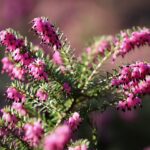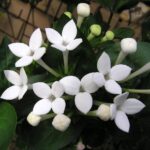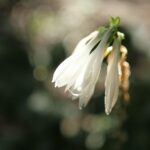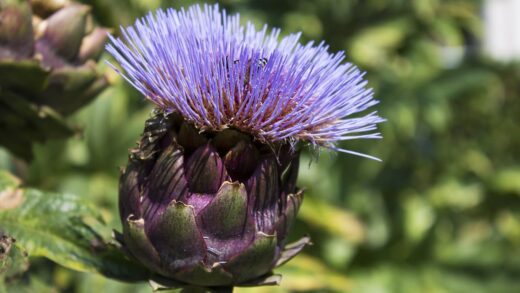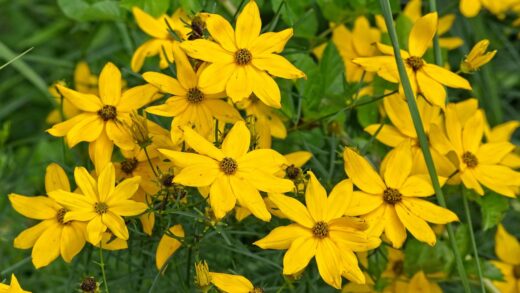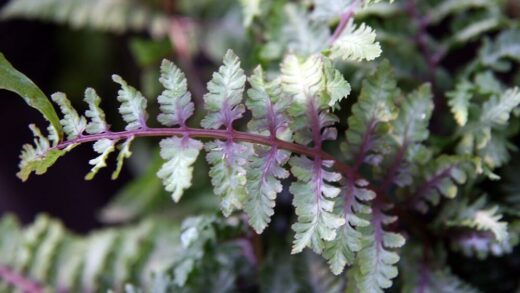Providing a balanced and consistent supply of nutrients is crucial for unlocking the full potential of the bouvardia flower, promoting not only lush, healthy foliage but also a profusion of its famously vibrant and fragrant blooms. Like all plants, bouvardia requires a range of macronutrients and micronutrients for its various metabolic processes, and the limited volume of soil in a container can quickly become depleted. Therefore, a regular fertilization program is not just beneficial but essential for long-term success. Understanding what to feed your bouvardia, when to feed it, and how to apply fertilizer correctly will ensure your plant has the energy reserves needed to thrive and perform its spectacular floral display throughout the growing season.
The primary nutrients that plants require in the largest amounts are nitrogen (N), phosphorus (P), and potassium (K). Nitrogen is essential for vegetative growth, contributing to the development of strong stems and deep green leaves. Phosphorus plays a vital role in root development, energy transfer, and, most importantly for bouvardia, the formation of flowers and seeds. Potassium is crucial for the overall health and vigor of the plant, helping to regulate water movement, improve disease resistance, and enhance the quality of the flowers. A good fertilization program for bouvardia will provide these three nutrients in a balanced ratio.
During the active growing season, which spans from spring through summer, bouvardia benefits from regular feeding. A balanced, water-soluble fertilizer is an excellent choice for container-grown plants, as it delivers nutrients to the root system in a readily available form. Look for a fertilizer with a balanced N-P-K ratio, such as 10-10-10 or 20-20-20. This should be applied every two to four weeks, depending on the concentration and the specific instructions on the product label. Always dilute the fertilizer to the recommended strength, or even half-strength, to avoid the risk of burning the plant’s sensitive roots.
It is critically important to cease fertilization as the plant’s growth naturally slows in the autumn and winter. Continuing to feed a dormant plant can be harmful, as the unused fertilizer salts can accumulate in the soil, leading to root damage. The plant simply does not need the extra nutrients when it is not actively growing. You should stop feeding your bouvardia by early autumn and only resume your fertilization schedule in the following spring when you observe the first signs of new growth. This resting period allows the plant to properly enter dormancy and conserves its energy for the next season.
Proper application technique is also key to effective fertilization. Always water the plant thoroughly with plain water before applying a liquid fertilizer solution. Applying fertilizer to dry soil can scorch the roots and cause significant damage to the plant. The pre-watering ensures that the roots are hydrated and ready to absorb the nutrients without being overwhelmed. This simple but vital step helps to prevent chemical burn and ensures that the feeding process is a beneficial, stress-free experience for the plant.
Choosing the right type of fertilizer
When selecting a fertilizer for your bouvardia, you will encounter several different formulations, each with its own advantages. Liquid or water-soluble fertilizers are a very popular choice for houseplants and container-grown bouvardia. They are mixed with water and applied during regular watering, providing a quick and easily absorbed source of nutrients. This allows for precise control over the amount of food the plant receives and makes it easy to adjust the frequency and strength of the application throughout the growing season. A balanced formula, such as 20-20-20, is generally a good starting point.
Slow-release fertilizers offer a more hands-off approach to feeding. These come in the form of granules or pellets that are incorporated into the soil mix during potting or sprinkled on the soil surface. Each time you water the plant, a small amount of nutrients is released into the soil over an extended period, which can range from three to nine months depending on the product. This method provides a steady, continuous supply of nutrients and reduces the risk of over-fertilization, making it a convenient option for busy gardeners. However, it offers less control over the nutrient supply, which can be a disadvantage when you need to stop feeding for the winter dormancy period.
Organic fertilizers, such as fish emulsion, compost tea, or worm castings, are another excellent option for nourishing your bouvardia. These natural products not only provide a gentle, slow-release source of essential nutrients but also help to improve the soil structure and encourage beneficial microbial activity. While they may have a lower N-P-K ratio compared to synthetic fertilizers, they contribute to the overall long-term health of the soil ecosystem. Organic options are less likely to cause root burn, making them a safer choice, especially for sensitive or young plants.
For bouvardia, a combination of fertilizer types can often yield the best results. For example, you could incorporate a slow-release granular fertilizer into the potting mix at the beginning of the season to provide a baseline level of nutrition. This can then be supplemented with periodic applications of a liquid, water-soluble fertilizer, particularly one that is higher in phosphorus, during the peak blooming period to provide an extra boost and encourage more prolific flowering. This combined approach ensures both consistent background nutrition and targeted feeding when the plant needs it most.
Understanding fertilizer labels (n-p-k)
Deciphering the information on a fertilizer label is a fundamental skill for any gardener. The most prominent information you will see is a set of three numbers, such as 10-10-10 or 5-10-5. This is the N-P-K ratio, and it represents the percentage by weight of the three primary macronutrients: Nitrogen (N), Phosphorus (P), and Potassium (K), always in that specific order. Understanding what each of these elements does is key to selecting the right product for your bouvardia’s needs at different stages of its growth.
Nitrogen (N), the first number in the ratio, is the primary driver of vegetative growth. It is a major component of chlorophyll, the molecule that plants use to convert sunlight into energy, and is essential for producing lush, green leaves and strong stems. A fertilizer with a higher first number will promote vigorous foliage growth. While important, an excess of nitrogen at the expense of other nutrients can sometimes lead to a beautiful, leafy plant with very few flowers, which is not the desired outcome for a flowering specimen like bouvardia.
Phosphorus (P), the second number, is often referred to as the “bloom booster.” This nutrient is critical for a wide range of functions, including root development, cell division, and energy transfer within the plant. Most importantly for bouvardia enthusiasts, phosphorus plays a direct role in the initiation of flower buds and the development of blossoms and seeds. A fertilizer with a higher middle number is often recommended for flowering plants to encourage a more abundant and vibrant floral display.
Potassium (K), the third number, is the all-around regulator and protector. It helps to control the opening and closing of stomata (the pores in the leaves), which is crucial for water regulation and photosynthesis. Potassium also strengthens the plant’s cellular structure, improving its resistance to diseases, pests, and environmental stresses like drought or temperature fluctuations. It contributes to the overall health and vigor of the plant, ensuring it has the strength to support its growth and flowering. For bouvardia, a balanced fertilizer or one with slightly elevated phosphorus and potassium levels is generally ideal.
Fertilization schedule through the seasons
A successful fertilization strategy for bouvardia requires adapting to the plant’s natural growth cycle, which changes dramatically with the seasons. The feeding schedule should align with the plant’s periods of active growth and dormancy. The most intensive feeding period is from spring through summer, when the plant is investing a tremendous amount of energy into producing new leaves, stems, and, most importantly, flowers. This is the time to provide a consistent supply of nutrients to fuel this growth.
Begin your fertilization routine in the early spring as soon as you notice the first signs of new growth. This is a signal that the plant has emerged from its winter dormancy and its metabolic processes are ramping up. Start with a balanced, water-soluble fertilizer, perhaps at half the recommended strength for the first couple of applications, to gently reintroduce nutrients to the system. As spring progresses and growth becomes more vigorous, you can increase to the full recommended strength and apply it every two to four weeks.
Throughout the summer, which is the peak blooming period for bouvardia, maintain your regular fertilization schedule. This consistent supply of nutrients is vital to sustain the energy-intensive process of continuous flowering. If your plant’s foliage looks healthy but it is not blooming as profusely as you would like, you could consider switching to a “bloom booster” formula with a higher phosphorus content (the middle number) for a few applications to specifically encourage flower production. Always monitor the plant for any signs of fertilizer burn, such as browning leaf tips, and flush the soil with plain water if this occurs.
As autumn approaches and the days get shorter and cooler, the plant’s growth will naturally begin to slow down. This is the time to start tapering off your fertilization. You can reduce the frequency of feeding to once a month and then stop completely by mid-autumn. It is crucial to halt all feeding during the winter months. The plant will be in a dormant or semi-dormant state and will not be able to use the nutrients. Feeding a dormant plant can lead to a harmful buildup of salts in the soil, which can damage the roots and compromise the plant’s health heading into the next growing season.
Signs of nutrient deficiency and excess
Observing your bouvardia’s leaves can provide valuable clues about its nutritional health, indicating whether it is receiving too little or too much of a particular nutrient. A general yellowing of the older, lower leaves is often a classic sign of nitrogen deficiency, as the plant will move this mobile nutrient from older tissues to support new growth. If the plant’s growth is stunted and the leaves are a pale green color overall, it may also point to a lack of nitrogen.
A deficiency in phosphorus can be more subtle. It sometimes manifests as a dull, slightly purplish tint on the leaves, especially on younger foliage. The most noticeable symptom, however, is often a lack of performance; a plant with a phosphorus deficiency will exhibit weak root growth and will be reluctant to produce flowers, or the blooms may be small and sparse. If your bouvardia is otherwise healthy but not flowering well, a lack of phosphorus could be the underlying issue.
Potassium deficiency often appears as a yellowing or browning along the margins or edges of the older leaves, while the center of the leaf remains green. The plant may also have weak stems and a generally low resistance to stress and disease. Since potassium is vital for water regulation, a deficient plant may be more prone to wilting during warm weather. These specific visual cues help differentiate the problem from a general watering issue or other deficiencies.
Conversely, it is also possible to give your bouvardia too much fertilizer, which can be more damaging than not feeding it at all. The most common sign of over-fertilization, or fertilizer burn, is the appearance of brown, crispy leaf tips and margins. You may also see a white, crusty salt buildup on the soil surface. In severe cases, the plant may wilt, and the lower leaves may yellow and drop off as the roots become damaged by the excessive concentration of salts in the soil. If you suspect over-fertilization, you should flush the soil thoroughly with large amounts of plain water to leach out the excess salts.

